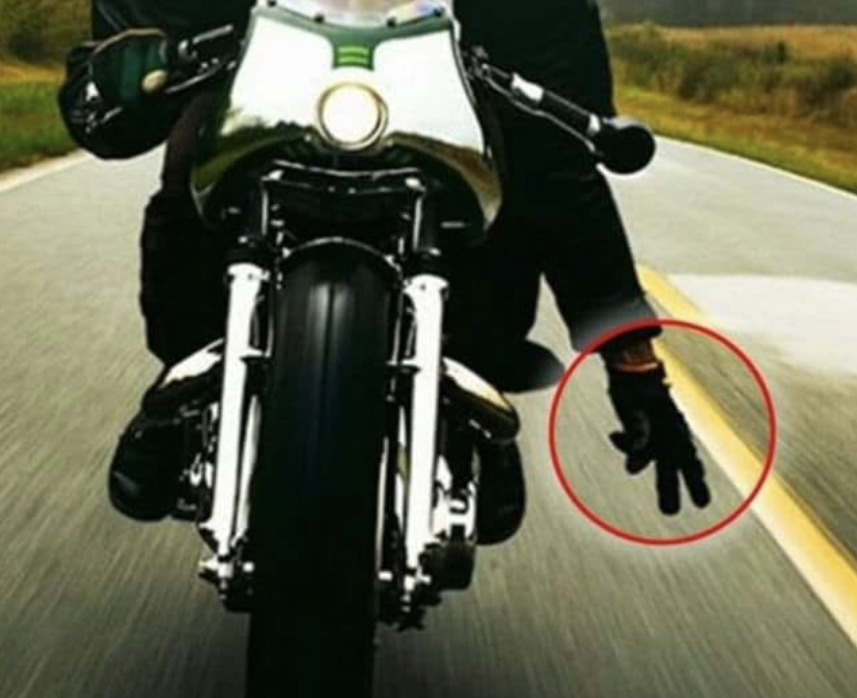To understand the origins of this gesture, we must go back to the 1970s. At the time, Barry Sheene, a renowned British racer, became a legend on the racetrack. But off the track, he was also famous for the friendly gesture he gave to other motorcyclists: the V sign. A simple yet powerful symbol, it quickly spread across the European continent.
Even today, this greeting has become a reflex. It’s passed almost naturally. All you have to do is pass another biker and extend two fingers. Without a word, the message is clear: « I see you, I respect you, we’re part of the same family. »
Solidarity born from asphalt

But it’s not just a matter of tradition. Bikers, long stigmatized, have developed a true culture of mutual aid. Wrongly accused of reckless or noisy behavior, they have gradually woven a network of silent solidarity. Stopping to help a stranded motorcyclist, reporting a hazard on the road, or simply greeting a stranger on two wheels: these small gestures create bonds between enthusiasts.
And therein lies the true beauty of this code. In a world where everything moves fast, where relationships are often virtual, this simple sign brings us back to something authentic, something real. A bit like a shared smile in a Parisian traffic jam : unexpected, but comforting.
Well-oiled communication

Beyond the V, motorcyclists use a whole range of body language on the road. Why? Because on a motorcycle, it’s impossible to communicate. The wind noise, the full-face helmet, the constant attention to driving: everything complicates verbal communication.
So, they adapt. A rapid flash of headlights? It could signal an upcoming speed camera. A leg stretched to the left? It’s often to thank a motorist for moving over. Every gesture has its meaning. And every motorcyclist, with experience, learns to decipher them.
A language that saves… and brings together
These signals aren’t there to show off . They’re essential for safety. Whether it’s warning of an obstacle, a traffic stop, or simply to make sure everything is okay, it’s thanks to this visual language that the road becomes safer.
And even if you don’t ride a motorcycle, there’s something inspiring about this way of connecting with others, without the need for words. Like a life lesson on two wheels: sometimes a little sign is worth a thousand words.
